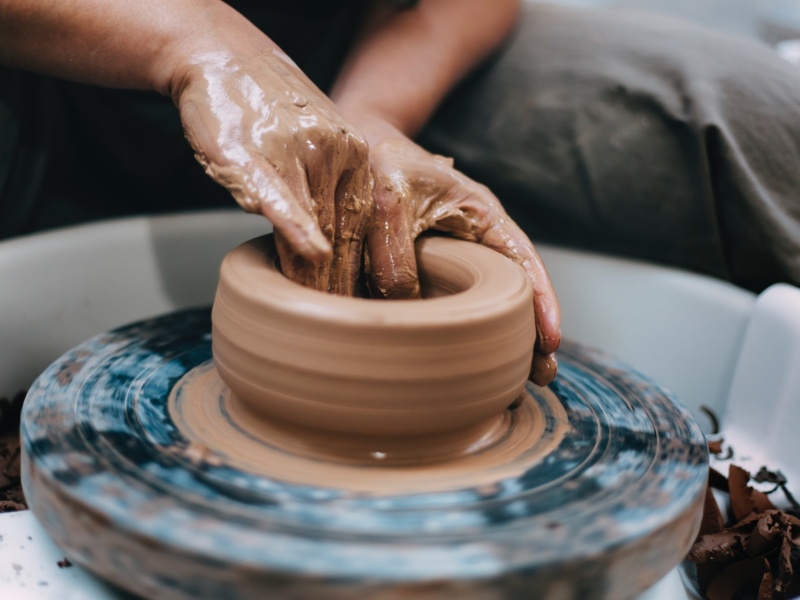Pottery was one of the first forms of art after cave painting when, with the discovery of fire, homo sapiens started to fashion earthen wear to make cooking, eating and hunting easier and to help us connect socially and spiritually with others. There is something downright earthy and real about getting your hands into a piece of clay to shape something functional or artistic from it. When did you last play with clay? It’s an exquisite experience to feel the natural clay in your hands – time just passes and something arises. Even better, there are a number of benefits that can enhance your health while you’re experiencing this.
Health benefits include:
- Strengthens your hands, wrists and arms Spinning and moulding clay uses your hands, wrists and arms, in a gentle way which develops dexterity and fine motor skills, and builds strength. This is good for those with arthritis, as it keeps the joints moving.
- Encourages creative expression Playing with clay encourages you to explore and be creative with your own hands. There is no right or wrong, simply artistic expression which is good for us and helps us release.
- Creates focus It helps you switch off from the usual worries of life and work, and enter a different world of creating. You get into a flow and time passes without you knowing it. Creating pottery requires focus and eliminates distractions.
- Reduces stress The self-expression and the smooth movement of using your hands to create pottery is relaxing and helps to relieve stress. Cortisol levels are reduced.
- Enhances sensitivity to touch Using our hands to create pottery builds our sensitivity to touch. Even subtle movements can change the shape and texture of what we're creating. This increases awareness of our sense of touch, which then impacts other areas of our life.
- Boosts mood The physicality of clay is one of the keys to its therapeutic value. Place your hands on wet clay and you will understand. The process of making pottery elevates our sense of inner calm and increases our self confidence and self esteem. It is often used to treat depression through art therapy. Connecting with the clay, by running our fingers over it and giving it shape and life, enables us to self-express.
- Uses cognitive thinking Although artistic in nature, making pottery requires our judgement and decision making. Thinking through what you'll create, how will you shape it, what colours will it be, what textures you'll use all involve using your brain.
"It’s very meditative. It turns off a higher level of thinking. You have to let go and give in to the unpredictability of it. You can go in with an idea of what you want to make, and the clay doesn’t want to do that."
